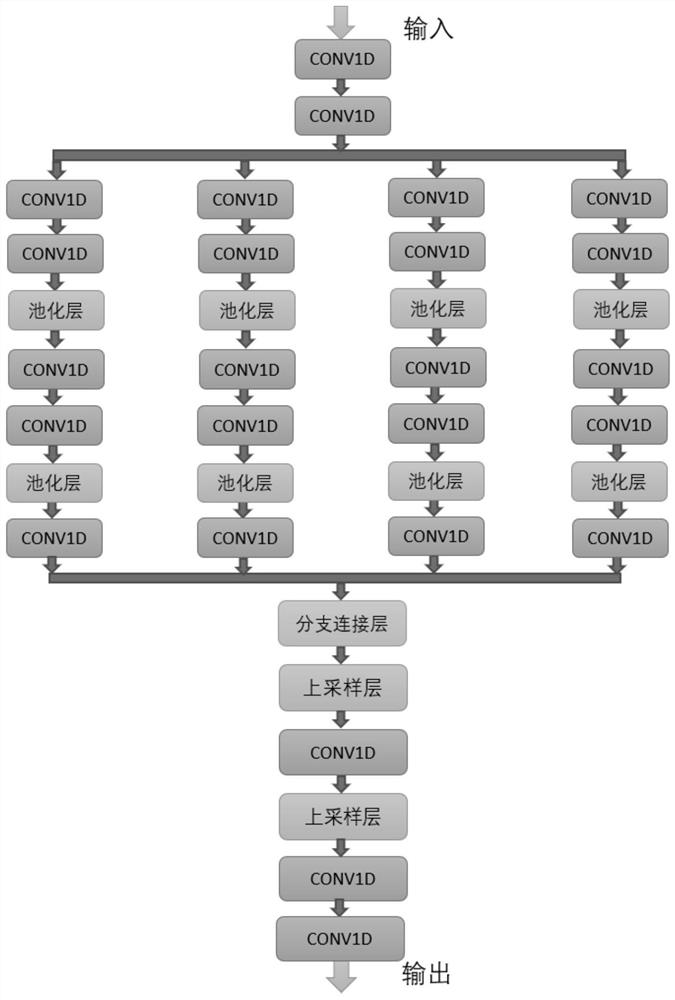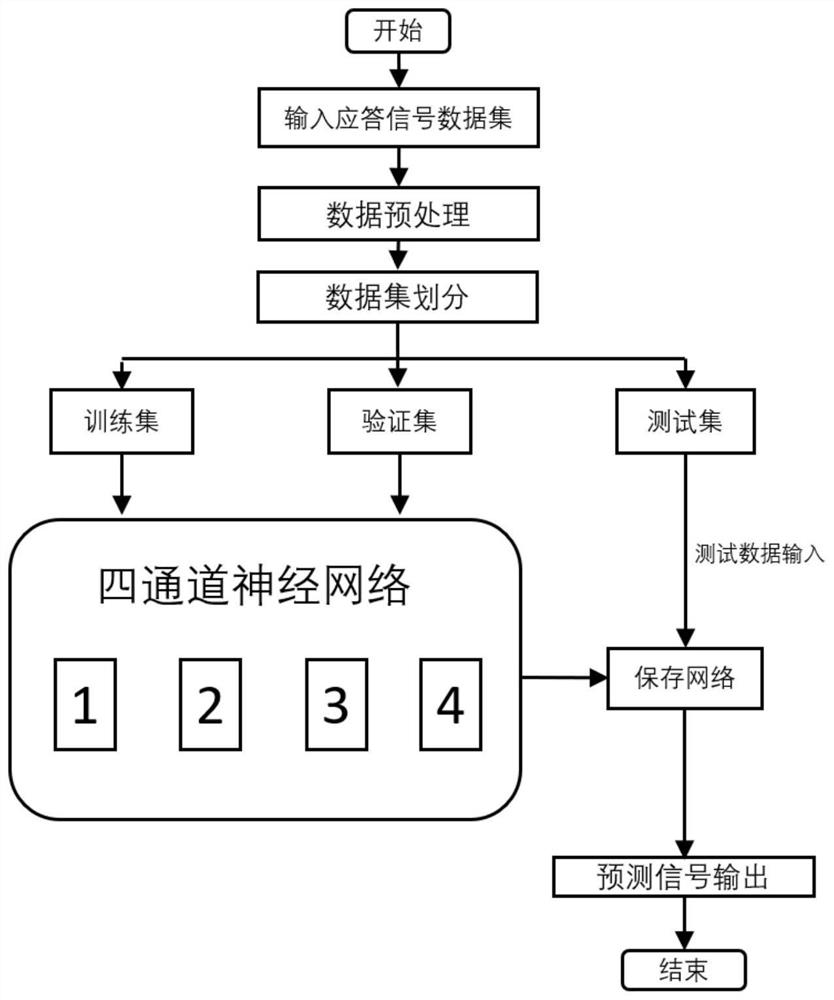Secondary radar signal processing method based on deep four-channel network
A secondary radar and signal processing technology, applied in the radar field, can solve problems such as analog signal distortion, data transmission rate impact, and harmful transmission, and achieve the effects of reducing feature loss, excellent denoising performance, and reducing learning rate
- Summary
- Abstract
- Description
- Claims
- Application Information
AI Technical Summary
Problems solved by technology
Method used
Image
Examples
Embodiment
[0021] This example includes the following steps:
[0022] Step 1: Dataset preparation.
[0023] The secondary radar response signal with a total number of samples of 40000 and a time step of 512 is taken as sample data. Add the demodulated response signal of Gaussian white noise with signal-to-noise ratio SNR=5 as training data, denoted as X={x ij |i=1,2,...,N; j=1,2,...,K}, where N=40000, K=512. The response signal without adding noise is used as the training label, denoted as Y={y ij |i=1,2,...,N; j=1,2,...,K}. And divide it into training set, verification set and test set with the ratio of (0.8,0.1,0.1).
[0024] Step 2: Preprocessing the dataset.
[0025] Randomly scramble the training sample data of the secondary radar response signal, expand the dimension of the sample data X and label Y, and form a 3D tensor in the form of (n, t, f), where n represents the number of samples, and t=512 represents Time step, f represents the number of feature layers. and normalize...
PUM
 Login to View More
Login to View More Abstract
Description
Claims
Application Information
 Login to View More
Login to View More - R&D Engineer
- R&D Manager
- IP Professional
- Industry Leading Data Capabilities
- Powerful AI technology
- Patent DNA Extraction
Browse by: Latest US Patents, China's latest patents, Technical Efficacy Thesaurus, Application Domain, Technology Topic, Popular Technical Reports.
© 2024 PatSnap. All rights reserved.Legal|Privacy policy|Modern Slavery Act Transparency Statement|Sitemap|About US| Contact US: help@patsnap.com









